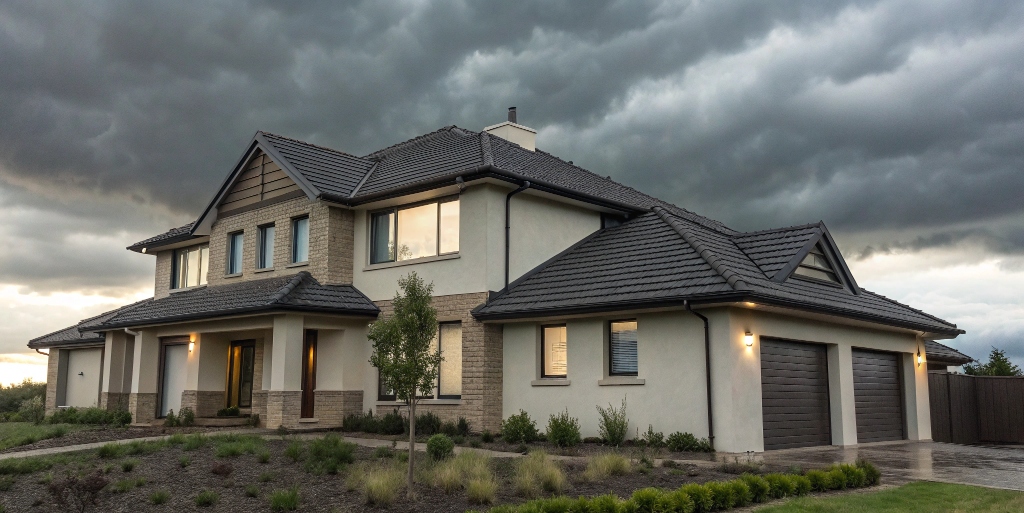What Is Weatherproofing?
Weatherproofing refers to a comprehensive set of preventive measures that protect your home from nature’s unpredictable elements. While traditional methods—such as adding caulking to window frames or replacing worn shingles—still play a role, advances in construction have opened up new ways to fortify homes against wind, rain, and extreme temperatures. The right approach often begins with understanding your home’s vulnerabilities and local climate patterns and then utilizing modern solutions to mitigate risk.
In regions with challenging weather, utilizing specialized services such as flat roof construction St Louis County MO, can transform a property to handle rainfall and resist standing water. By installing high-quality barriers and drainage systems, homeowners not only protect their properties today but also lay the groundwork for reduced repairs and improved structural stability for years to come. Small improvements, such as sealing gaps or selecting the right materials, can snowball into a boost in value and greater peace of mind throughout each season.
Top Threats to Home Exteriors
What stands between a home and the chaos of severe weather is often no more than a layer of roofing, siding, or foundation. Yet, these barriers are constantly tested. Water is the number one enemy, with its ability to infiltrate minute cracks—sometimes undetected for months—until stains, mold, or rot appear. High winds, particularly during storms, can strip away loose materials, push moisture deep into structures, or pelt surfaces with flying debris, leading to hidden damage.
Seasonal extremes also take their toll, as surfaces expand and contract, compromising seals and creating opportunities for leaks. According to Forbes Home: The True Cost of Roof Leaks, ignoring even minor roof leaks can quickly lead to thousands of dollars in damage, especially since water often travels far from its entry point before signs become visible. It’s not just what you see on the surface—the foundation, trim, and gutters can all become channels for water if neglected. Regular inspection, especially after major storms, is a homeowner’s first line of defense, helping them address issues before repair costs escalate.
Modern Materials for Defense
The new generation of weatherproofing materials has transformed how homes defend themselves against the elements. Unlike earlier decades, when asphalt and wooden shingles dominated, today’s homeowners can select from a range of engineered options designed for durability, flexibility, and environmental impact. Synthetic underlayments, often made from polymer- or rubber-based materials, outperform old-fashioned felt by providing improved water resistance and a longer lifespan.
Reflective roof surfaces and insulated siding products also help control indoor temperatures, directly reducing energy consumption. Specialized membranes and moisture barriers prevent water from seeping into wall cavities. The key is to select products that are rated for the weather they’ll face—a home in a hurricane may need impact-resistant shingles, while one in an area with frequent heavy rainfall should rely on seamless flashing and water-shedding designs. Most crucially, regardless of the material’s advanced features and warranty coverage, expert installation makes all the difference.
Energy Efficiency Benefits
Strengthening your home against the weather often provides the unexpected (and welcome) bonus of making it more energy-efficient. Gaps, cracks, and poorly insulated zones allow air to escape, forcing heating and cooling systems to work overtime. Precise air sealing and upgrades to insulation may seem like minor adjustments, but they can deliver significant savings. According to the U.S. Department of Energy’s Weatherization Guidelines, updates have the potential to decrease energy costs by 10-15%, primarily in older or drafty homes.
Enhanced weatherproofing not only reduces bills but also allows for fewer indoor temperature swings and an improved sense of comfort in living spaces. Health is another important factor—sealing out moisture helps keep mold, pollen, and dust from entering, which is especially important for people with allergies or respiratory concerns. As modern standards rise, weatherproofing is becoming part of a holistic approach to household well-being, combining thoughtful construction with opportunities for cleaner air and a reduced carbon footprint.
Cost vs. Value Analysis
It’s common for homeowners to put off weatherproofing projects due to the upfront cost, but research and real-world data consistently show that the investment pays dividends. For instance, replacing a deteriorating roof or outdated siding can recoup much or all of its cost in increased home value and prevented damage. The National Association of Realtors ranks new roofing among the highest-return improvements, often yielding an ROI exceeding 100% at resale.
Beyond direct financial return, there are additional bonuses: fewer emergency repair bills, greater protection against insurance claims, improved energy efficiency, and healthier indoor spaces. Focusing first on critical areas susceptible to water or wind—the roof, windows, and exterior doors—maximizes protection and quickly demonstrates the value of tackling these projects before disaster strikes.
Future Trends in Home Protection
The future of weatherproofing is technologically advanced and sustainable, with sensors installed in roofing systems and basements to detect leaks and send alerts to homeowners. Solar-reflective roof coatings reduce cooling costs and offer longer life spans. Biodegradable, mold-resistant insulation is gaining popularity while minimizing environmental impact. Home automation enables proactive adjustments for ventilation and dehumidification. Insurance discounts for properties with enhanced weatherproofing measures are becoming more prevalent. The next wave of home protection integrates smart solutions and sustainable products, making future homes safer, more energy-conscious, and easier to maintain.



